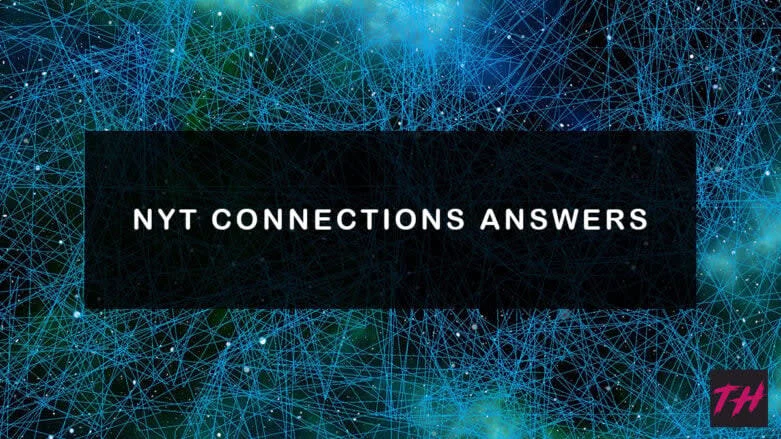Cracking the Code: Why “Connections Hint” Has Everyone Hooked on The New York Times’ Latest Puzzle Craze

A New Puzzle Taking Over the Internet
Move over, Wordle—there’s a new puzzle in town. If you’ve been scrolling through social media lately, you’ve probably seen people talking about “today’s Connections hint.” The New York Times’ daily puzzle, Connections, has quietly become one of the most addictive brain games of 2025, challenging players to think in categories rather than individual words.
At first glance, the game looks simple: 16 words arranged in a 4×4 grid. Your mission is to group them into four sets of four words that share a hidden connection. Sounds easy, right? Until you realize that half the words could fit into multiple groups, and one wrong assumption can throw off your entire strategy.
That’s where the Connections hint comes in—a small clue that helps players nudge their brains in the right direction without spoiling the whole game.
—
What Exactly Is a Connections Hint?
A Connections hint is a gentle clue designed to help you guess one or more of the puzzle’s hidden categories. Unlike full answers, hints are vague enough to make you think, but clear enough to stop you from getting completely stuck.
For example, if one group of words includes “Apple,” “Amazon,” “Meta,” and “Google,” the hint might be: ‘Think tech giants.’ Or if the puzzle includes words like “Heart,” “Diamond,” “Spade,” and “Club,” a hint might be: ‘Something you’d find in a deck.’
Players who use hints say they make the game more rewarding because they keep the “aha!” moment intact. It’s not about cheating—it’s about collaboration, discovery, and learning to see patterns in unexpected ways.
—
How Connections Became the Internet’s New Obsession
When Connections launched on The New York Times Games app in mid-2023, it was quietly added alongside other favorites like Wordle, Spelling Bee, and The Crossword. Within months, it exploded in popularity.
What makes it different? Unlike Wordle, where you guess a single word, Connections asks you to group ideas, which engages your brain on a deeper level. You’re not just thinking about definitions—you’re thinking about relationships, culture, and context.
Each color in the puzzle (yellow, green, blue, and purple) represents a difficulty level. Yellow is usually the easiest, while purple can make even language experts sweat. This mix of accessibility and challenge keeps players coming back day after day.
And then there’s the social factor. Players now share screenshots of their results, post their guesses online, and exchange Connections hints in dedicated Reddit threads and Discord servers. Communities have formed around the daily puzzle, where people bond over shared victories—and the occasional frustrating defeat.
—
Why Hints Matter More Than Answers
In most games, giving away an answer ruins the fun. But with Connections, hints have become a part of the game’s culture.
The balance between knowing and guessing is what keeps it exciting. A good Connections hint doesn’t hand you the solution; it gives you just enough of a spark to see the pattern yourself. It’s the difference between being told “the answer is X” and realizing, “Oh, I get it now!”
This subtle approach has made hints an essential part of the experience, not a form of cheating. Some fans even say finding or interpreting hints is half the fun—like a puzzle within a puzzle.
—
The Psychology Behind the Addiction
Experts say Connections works because it taps into pattern recognition, one of the brain’s favorite forms of problem-solving. Humans naturally enjoy finding order in chaos—matching, categorizing, and connecting ideas.
According to psychologists, the brief frustration before finding a connection releases dopamine when you finally solve it. That “mini reward” system keeps players hooked. Combine that with the satisfaction of getting help from a well-timed hint, and you’ve got a perfect daily mental workout.
—
Tips for Using Connections Hints Wisely
If you’re new to the game and struggling to find your rhythm, here are a few smart ways to use Connections hints effectively:
1. Start Broad: Read all the words first and look for obvious links—movies, sports, slang, or foods.
2. Use One Hint at a Time: A single hint can unlock a pattern that leads to multiple groups. Don’t overuse them.
3. Save Purple for Last: The hardest category usually has the trickiest connections.
4. Play With Others: Discussing hints with friends or online communities makes the puzzle more social and fun.
5. Think Beyond Literal Meanings: Many puzzles rely on puns, idioms, or cultural references.
—
More Than a Game—A Daily Connection
The popularity of Connections and the search for “Connections hints” show that puzzles aren’t just about competition—they’re about community. In a world where people crave mental breaks and moments of focus, Connections offers a daily dose of logic, laughter, and togetherness.
Whether you’re a seasoned solver or a newcomer just discovering the joy of pattern-finding, remember this: every puzzle has its perfect link—you just have to find the connection.
—





